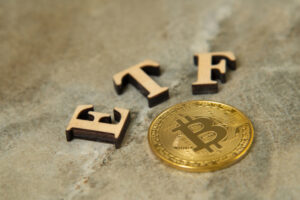An Overview of Filecoin
If you follow the cryptocurrency scene, you’ve probably heard of Filecoin. It’s a fresh player in the blockchain market that is growing popularity with investors, tech nerds, and cryptocurrency aficionados. However, what precisely is Filecoin?
Decentralized storage platform Filecoin aims to “store humanity’s most important information.” This ambitious project, which is built on blockchain technology, has the potential to revolutionize the data storage industry. So let’s investigate what makes Filecoin so unique.
The Demand for Distributed Storage
In the standard operating procedure, data is kept on centralized servers that are owned by businesses like Google and Amazon. These businesses have complete control over the data, and if their systems fail, they may access, censor, or even lose it. By decentralizing storage, Filecoin aims to change this model by cutting down on single points of failure and enhancing data security and privacy.
An open market for buying and selling storage space is provided by Filecoin. It uses an Airbnb-like business model but for digital storage. Anyone who shares their unused hard drive space with the community does so as a storage provider, earning Filecoin tokens (FIL) in the process.
How Filecoin Works
The InterPlanetary File System (IPFS), a technology that permits peer-to-peer data sharing in a distributed file system, is used by Filecoin. IPFS obtains data from several nodes, reducing the risk of network congestion, speed problems, and single-point failures. HTTP pulls data from a single origin server.
Storage providers are verified by the Filecoin network using “proofs.” These providers are required to give two different kinds of proof: Proof of Replication (to verify that the data has been copied to their local storage) and Proof of Spacetime (to show that the data has been stored for a certain amount of time). Providers receive FIL tokens as payment after successful verification. Users who want to store their data enter into a contract with these providers, make payment in FIL, and their data is then saved on the provider’s hard disk.
The Native Token (FIL)
The Filecoin network cannot function without FIL, its native cryptocurrency. It is used as payment for network services, including data storage and retrieval. The utility of the token inside this ecosystem and its rarity give it value, making it a valuable asset for investors and traders.
How Important Filecoin Is
The decentralized marketplace approach used by Filecoin for data storage has a number of potential benefits:
Decentralization can improve the security and privacy of data that is stored. Targeting data spread across hundreds of distinct nodes rather than in a single centralized location presents more of a challenge for hackers.
dependability: The system can provide improved dependability with data dispersed across several geographical regions and nodes. The data can still be accessed from other nodes even if a few of them fall down.
Cost-effectiveness: Filecoin may cut the cost of data storage by allowing a wide range of storage providers to compete for customers and drive down costs.
Community Ownership: Thanks to Filecoin’s decentralized concept, regular internet users can turn from mere users to stakeholders in the world’s data storage network.
The Prospects for Filecoin
The ability of Filecoin to immediately establish itself as a dependable, affordable storage option will be a key factor in determining its success. Filecoin’s distinctive features might help it stand out despite competition from conventional storage services and other decentralized storage projects.
The promise of Filecoin is a more dependable, democratic, and secure internet where people truly control their data. It will be fascinating to see what effect Filecoin may have on the larger technological and cryptocurrency scene as we enter this new era of decentralized storage.
Let’s delve deeper into the details of Filecoin for the more tech-savvy among you. In this section, we’ll assume that you have a basic understanding of blockchain technology and Ethereum and concentrate primarily on Filecoin’s distinctive design, which distinguishes it as a distinctive decentralized storage network in the Web3 realm.
A Filecoin Technical Overview
A peer-to-peer network called Filecoin uses cryptography and built-in economic incentives to make sure that data are reliably stored over time. Anyone can sign up for Filecoin to store their files or to earn money by storing the files of other users. Unlike centralized storage facilities run by a single corporation, Filecoin enables public markets where anybody can store and retrieve files.
Filecoin is based on the IPFS protocol, a peer-to-peer distributed storage network that uses content addressing to provide persistent data references rather than requiring users to rely on particular hardware or cloud services. In contrast to IPFS, Filecoin adds an incentive layer to encourage the secure archiving and access of content.
Filecoin supports a variety of use cases, including the archiving of Web2 datasets at a lower cost than cloud storage as well as the storage of native Web3 NFT and metaverse/game assets.
Financial Analysis of Filecoin
The field of crypto-economics research looks at how cryptocurrencies can encourage people to use blockchain networks. Let’s examine how Filecoin controls incentivization inside the network in this setting.
A utility token called FIL, which serves as Filecoin’s native currency, is utilized to reward permanent storage on the Filecoin network. By offering dependable storage services or committing store capacity on the network, storage providers mine FIL. Because there are only 2 billion FIL available, both scarcity and value are guaranteed.
Storage providers must lock Filecoin coins as pledge collateral for consensus security, storage dependability, and contract assurances during block reward mining in order to promote positive network behavior. If the storage fails a reliability test, collateral and any earned benefits by the storage providers could be reduced.
Instead of being a sequence of blocks, the Filecoin blockchain is a chain of tipsets. The consensus mechanism instructs nodes to build on the heaviest chain since each tipset, a collection of blocks with the same height and parent tipset, is given a weight. By preventing a node from purposefully interfering with other nodes in order to generate legitimate blocks, this architecture lends a certain level of security to the Filecoin network.
As a result of its distinctive approach, Filecoin stands as a light of potential in the field of decentralized storage and is an important player in the blockchain market. You should keep an eye on Filecoin’s effects on data storage and the wider technology scene whether you’re a developer, investor, or just an interested bystander.






